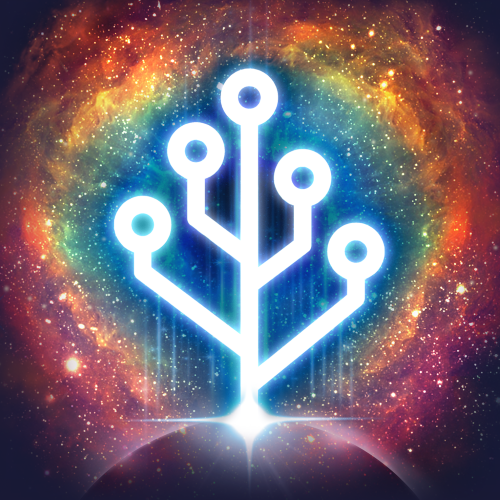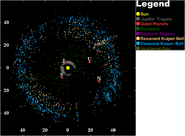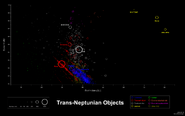The Kuiper Belt is the 25th Celestial Body and the 4th Asteroid obtained in The Beyond Bubble Universe, which can generate Stardust.
In-Game Description[]
"Out beyond Neptune, the Kuiper Belt is a disk made of gas, dust, asteroids, and other small objects, called planetesimals, floating in space like the Asteroid Belt, but nearly 20 times larger. It is home to most dwarf planets in the solar system."
Traits[]
Common[]
- Neptunian Disruption (Speed):
"Neptune's presence on the inner edge of the Kuiper Belt destabilizes other objects in the sector. The tug of its gravity can throw them into the inner solar system or out into interstellar space."
- Kuiper Cliff (Payout):
"On the outer edge of the Kuiper Belt, the density of large objects suddenly drops dramatically. Scientists theorize this may be because of the gravity of an as-of-yet undiscovered planet, around the size of Earth or Mars."
Rare[]
- Asteroids (Payout):
"Asteroids are rocky bodies that orbit the Sun, most frequently created from the impact between celestial bodies. They form the Asteroid Belt between Mars and Jupiter and the Kuiper Belt beyond Neptune."
Epic[]
- Speed of Light (Speed):
"The speed of light is the rate at which light and all massless particles travel through a vacuum. While it can seen instantaneous from up close, over long distances this speed limit becomes very noticeable. The theory of relativity relates to the speed of light."
- Cosmic Gravity (Payout):
"Gravity is one of the fundamental forces and key to understanding how the universe works. Using Newton's principles, astronomers can explain how stars and planets form, predict their mass and motion, and infer the existence of dark matter."
- Goldilocks Zone (Discount):
"The Goldilocks Zone, also called the Habitable Zone, is the region around a star with conditions necessary for a planet that can sustain life. Planets like Earth, with surface water and breathable atmospheres, might be found in these zones in other systems."
Achievements[]
- Name's the Same (Rank 5):
"Though the Kuiper Belt is named for the astronomer Gerard Kuiper, he did not discover or predict its existence. But he was one of the pre-eminent astronomers of his day, and an important figure in the birth of modern planetary science."
- Not-So Compact Disks (Rank 8):
"Astronomers have observed Kuiper Belt-like disks surrounding nine other stars. The presence of other disks of debris in space gives credence to the theory that they form from the same process that creates stars and planets."
Overview Images of the Kuiper Belt[]
Sources[]
- Kuiper belt — Images above taken
| | |
|---|---|
| |
Sun • Heliosphere • Alpha Centauri |
| |
Mercury • Venus • Earth • Mars |
| |
Moon • Io • Europa • Ganymede • Callisto • Titan • Enceladus • Triton |
| |
Asteroid Belt • Ceres • Vesta • Kuiper Belt |
| |
Jupiter • Saturn |
| |
Uranus • Neptune |
| |
Pluto • Haumea • Makemake • Eris |
| |
Shoemaker Levy 9 • Halley's Comet • Hale–Bopp |
| |
Sedna • Planet X • Hills Cloud • Oort Cloud |


